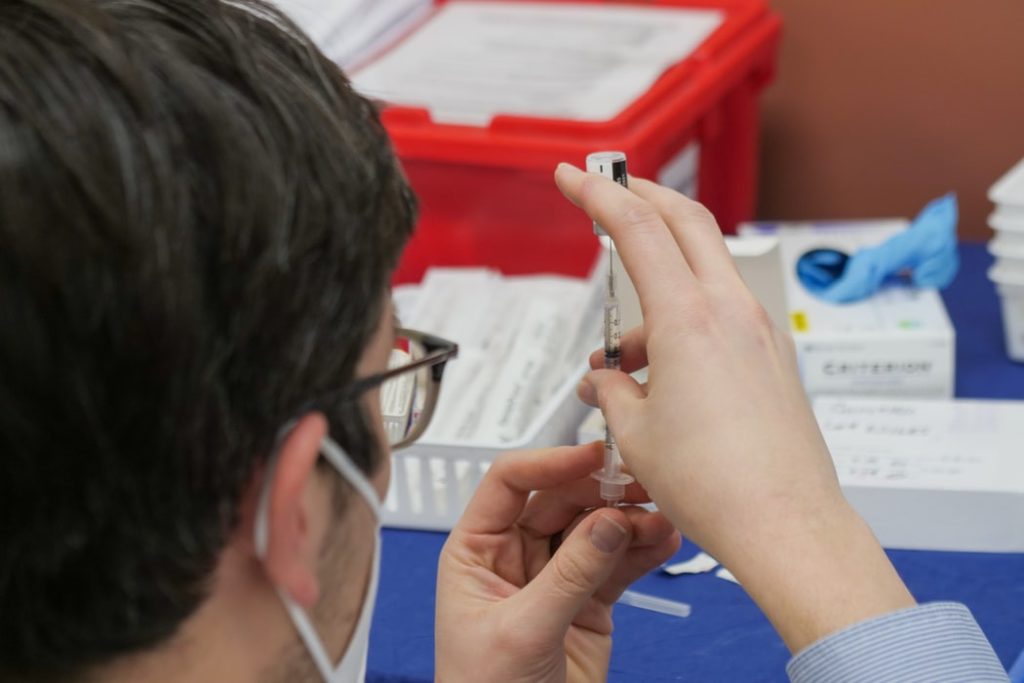The number reported should be cut in half, says Ministry of Health

On Jan. 28, the Government of Ontario revealed that due to a data error, only half of the people reported to be fully vaccinated against COVID-19 actually were.
Ministry of Health said officials “provided data on the number of doses administered to achieve full vaccination” rather than “the number of people who have been fully vaccinated.”
The problem has been fixed and adjustments have been made to reflect the proper numbers, according to the ministry.
Timothy Sly, epidemiologist and emeritus professor at Ryerson University’s School of Public Health, said the error doesn’t make much of a difference in the long run since there’s still a large amount of people that need to be vaccinated. However, he said the process should be cleaned up for accuracy purposes.
“For proper organization and knowledge of inventory and organization in general, they need to clean up the process a bit and make sure they know exactly who’s got the vaccine (and) who doesn’t,” he said.
Sly said that the consequences of delaying vaccination are that people are more vulnerable to infection, which is dangerous since the long term effects of COVID-19 remain unknown.
As reported by the CBC, communities that have been hardest hit by the pandemic are advocating to be considered for priority access to the vaccine. These communities have a higher risk of catching COVID-19 due to their dense populations and supply of frontline workers. Communities such as Thorncliffe Park which has had a disproportionately higher number of COVID-19 cases than other Toronto neighbourhoods since the start of the pandemic. Advocates believe that prioritizing these vulnerable neighbourhoods will allow the community to return to safety and improve overall health.
Gabrielle Sienes, a front-line worker and fourth-year collaborative nursing program student at Ryerson University, said that she worries this error will cause people who claim the virus is a hoax to become more defiant about the lockdown rules.
“It could cause people to become more relaxed about safety because they might think there are more vaccinated people, which means the cases will drop and they can take their mask off now or meet with people outside their households,” she said.
Getting Vaccinated
According to a study done by Statistics Canada in August 2020, over half of Canadians said they are very willing to get the COVID-19 vaccine. However, there is still nine per cent of the population that indicated it would be very unlikely for them to get it.
The study found that the top two reasons for this were distrust in the vaccine’s safety and a concern for the potential side effects.
Sly believes that misconceptions about the vaccine are borne either out of ignorance or deliberately by people who want to scare others.
“I think this kind of stupidity (anti-vaxx) is learned. It’s acquired through social media and people whispering from kitchen table websites in the depths of their ignorance and just simply trying to persuade others,” he said.
While he said he believes that anti-vaxxers are a lost cause, general vaccine hesitancy can be countered using research.
“You can get through to people just by leveling with it, by not being emotional and simply giving them an unlimited amount of absolute facts,” said Sly. “Hopefully, that common sense dominates over ignorance.”
As a front-line worker who spends most of her time between the surgical floor and the emergency room, Sienes said the most challenging part of the pandemic is seeing people act like it’s not happening.
“I’ve witnessed first hand what a COVID patient looks like and what they have to go through. Most times they are unconscious or they barely have their eyes open,” Sienes said. “It’s very frustrating seeing people pretend like there isn’t a pandemic going on or protesting the lockdowns or even protesting the existence (or) validity of the virus.”
Sienes was able to get vaccinated due to her placement. She has received the first dose of the Pfizer-BioNTech vaccine. She compares the vaccine to a flu shot but with more painful side effects afterwards.
“My arm was very sore and I experienced muscle aches,” she said. “I read that the second dose is supposed to hurt more and I’m honestly not excited but it’s a very miniscule price to pay in order to protect others and serve more people.”
Sienes also cites the tedious and thorough registration procedure, due to the vaccine being so new, as another difference between the flu shot and the COVID-19 vaccination process.
As of Feb. 2, there have been almost 75,000 people fully vaccinated against COVID-19 in Ontario.
